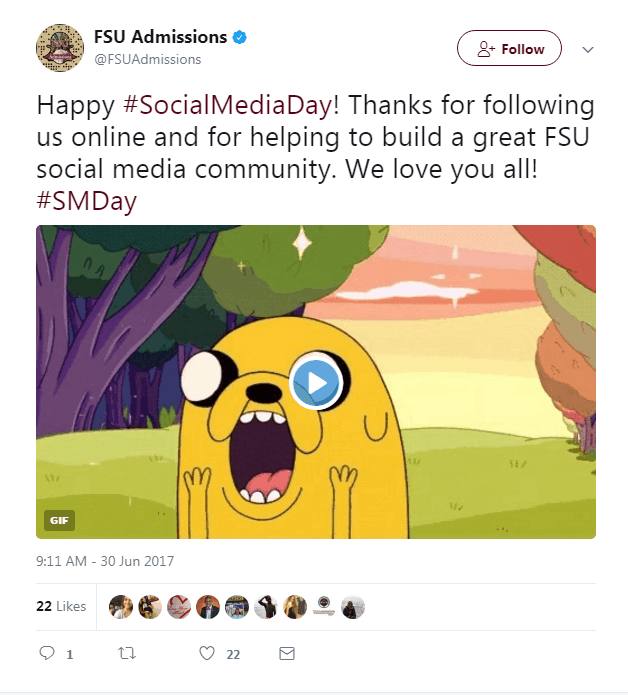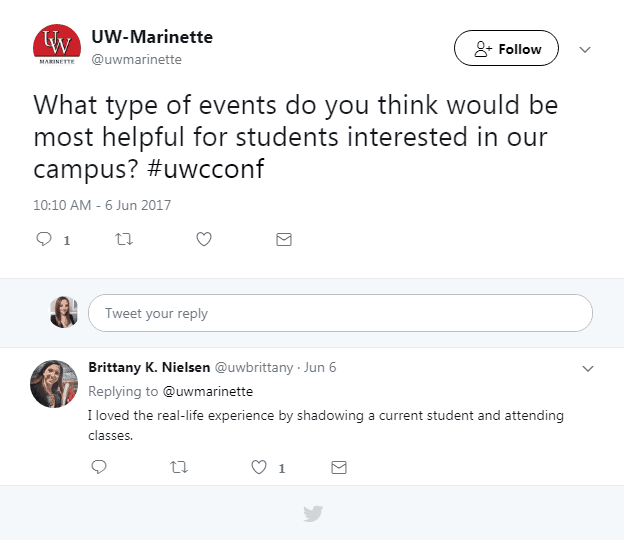
What is a digital student community? While there is no single definition, and much will depend on your student base and its needs, a digital student community comprises current and prospective students and the voices behind your school’s online channels like your social media accounts, blogs, and website. A digital community encourages participation from both sides and creates a sense of belonging.
Many schools are already on their way to building a digital community without realizing it. Does your school interact directly with students on Twitter? Do you use student-generated content on your blog or Instagram? If so, you’re already engaging in some activities that will help you cultivate a robust online community that could become an invaluable student recruitment and retention tool.
Read on to learn more about how to turn your online channels into a vibrant and active community.
The Power of Creating a Digital Student Community for Education Lead Generation
The importance of digital communities for Digital Student Communities for Education Lead Generation cannot be overstated. When a prospective student visits your website or other digital channels and sees you interacting with students in a fun way, sharing students’ pictures and experiences, or producing highly relatable content, they’ll want to become a part of the conversation. Digital communities help create a FOMO (fear of missing out) that drives student interest in your school and its unique online personality.
These online spaces are also essential for current students, offering them a place to interact with classmates and make new friends, seek help from tutors and support staff, and take a more active role in life on campus.
In addition, digital communities can be precious for recruiting and retaining online or blended-learning students. Because they won’t be on campus every day like a traditional student, being a part of a digital community can help foster a sense of belonging and inclusion, something many online students struggle with.
Finding Your School’s Unique Online Voice
The first step to building a thriving digital community is creating a distinct online voice and personality for your institution. The goal is to humanize your school, so prospective and current students feel like they are interacting with someone rather than an anonymous social media account.
Your school’s personality and voice should be according to your branding and policies and relatable for your target personas. For instance, a prestigious law school geared towards professionals will likely not use the same tone as a beauty school promoting to recent high school graduates. Finding your school’s unique personality will help you stand out from your competitors and capture the attention of prospective students.
For schools with a less formal brand, humour is an excellent way to connect with students. A healthy mix of academic-related content and tasteful jokes or well-placed humour helps show that while your school is invested in students’ academic success, you want students to have fun along the way.
Example: Florida State University thanks its online community on Social Media Day. The post is coupled with a funny GIF from the popular millennial show Adventure Time.

Content Students Find Useful Will Help Create a Valuable Community
Creating or curating content that speaks to their unique needs and concerns is essential to forming a digital community that students want to be a part of. In a 2013 survey conducted by The Guardian that reached out to 300 current and potential students, some of the most concerning comments about schools’ digital efforts were “I don’t find enough useful information that relates to me” and “They do not talk about the things we need to know.”
This demonstrates that there may be a disconnect between what schools are posting and what students want to see. With this in mind, schools should work to create content that is effective for recruiting students, has a positive impact on their online visibility, and is also informative and helpful.
Example: In the Undergraduate Admissions section of its website, Vanderbilt University created a blog that makes the admissions process easier and clearer for future students. The blog offers a checklist and some helpful tips for securing financial aid.

Increase Engagement Using Student-Generated Content
Almost everybody likes getting comments, replies, and likes on their social media posts. Still, it’s inspiring and memorable when a post, picture, or video is featured on another social media user’s profile. Schools can tap into this by using student-generated content.
By sharing students’ posts about life on campus, you reaffirm that they’re an important part of your digital community while encouraging them to keep sharing content related to your school. To top it off, by sharing real students’ posts, you provide prospective students an authentic look at your school, and studies have shown that 51% of millennials trust user-generated content more than other communications from a company’s website, advertising, or news articles.
Sharing prospective or future students’ social media posts about your school is also a smart tactic. Retweeting a picture of an applicant with their acceptance letter or sharing a photo of them wearing their new school t-shirt are two easy ways to invite future students into your digital community before they start class.
The school in the following example demonstrates the power of curating user-generated content to create a fun and buzz-worthy piece of content that welcomes students into the school’s community.
Example: The Daily Pennsylvanian, the University of Pennsylvania’s newspaper, created a montage video of future students’ reactions to receiving their acceptance letters. YouTube videos that utilize user-generated content get ten times more views than those that don’t, and this particular effort has garnered over 61,000 views, hundreds of likes and many comments.

Student blogs also present a unique opportunity for schools. There’s no better way to make students feel at home in your digital community than by allowing them to contribute their experiences, advice, and insights to your school’s online channels. This will also help with higher education lead generation, making your content appear more organic and less overtly promotional, which builds trust among prospective students.
Example: The University of Warwick in England has several contributors who regularly post to its student blog. The blog topics range from students’ reactions to receiving test results to their experiences during work placements.

Using Social Media to Create a Vibrant Digital Community and Increase Student Lead Generation
Social media is an incredibly versatile tool for building your digital community. You can use social media for content distribution, announcing contests, or even just interacting with followers.
It is also especially powerful for answering questions and resolving issues among current and prospective students. A study by J.D. Power found that young people between 18 and 29 are 43% more inclined to use a brand’s social media for servicing interactions like troubleshooting and Q&A.
By keeping your school available through social media, you open the lines of communication and make it easier for users to get the information they need. To personalize the experience further, have your social media moderators sign off replies with their initials or first names. This will make it feel like users are speaking with an actual member of your digital community.
Example: The University of Arts London’s Accommodation Twitter account answers a student’s question regarding accommodation payments. The staff member personalizes their response by addressing the user by name and signing the tweets off with their first name.

Another creative way schools can use social media to bolster their digital community is by requesting students’ input by asking questions or creating polls. By seeking out their opinions, you make students feel like they are making an essential contribution to the school and campus life while also benefiting from actionable feedback that you can use to improve recruitment and the student experience.
Example: The University of Wisconsin Marinette asks its Twitter followers to contribute their thoughts about what events the school could offer that would be helpful for prospective students.

One of the best ways to band an entire digital community is with hashtags, allowing prospective or current students to link their social media posts to your school. When creating a hashtag for your digital community, make sure that it’s easy to remember, unique to your school, and fits easily into many different types of content. The best hashtags for your digital community should align with and complement your school’s current marketing and promotional efforts.
Example: Georgia State University uses the hashtag #GSUncommon to build excitement among its digital community. Upon searching the hashtag on Twitter and Instagram, hundreds of users use it in posts about everything from applying and receiving their acceptance letters to graduating from the university. One student shares a photo with her official acceptance letter on her Instagram account using the hashtag #GSUncommon.

Running Fun Contests for Your School’s Digital Community
Contests are a great way to encourage engagement and get followers comfortable interacting with your school through digital channels. They can also be a great way to prompt users to share their images and videos that you can then use to create student-generated content for your blog, website, or other social media accounts.
Example: The University of Glasgow ran a social media contest encouraging students to submit photos of their Halloween costumes using the hashtag #uofgtrickortweet. On Instagram alone, the hashtag was used in over 100 posts.

Building an online community will help your school make more meaningful and personalized connections with current and prospective students. By creating content that students find useful, speaking to them in your school’s unique online voice, and enticing them to take part in and contribute to your digital community, you can encourage increased student lead generation, engagement with your online channels, and make your school’s digital community something prospective students eagerly want to be a part of.
FAQ’s To Consider:
What is lead generation in education?
When a prospective student visits your website or other digital channels and sees you interacting with students in a fun way, sharing students’ pictures and experiences, or producing highly relatable content, they’ll want to become a part of the conversation.
How do you get leads for school?
The first step to building a thriving digital community is creating a distinct online voice and personality for your institution. The goal is to humanize your school so prospective and current students feel like they are interacting with someone rather than an anonymous social media account.






